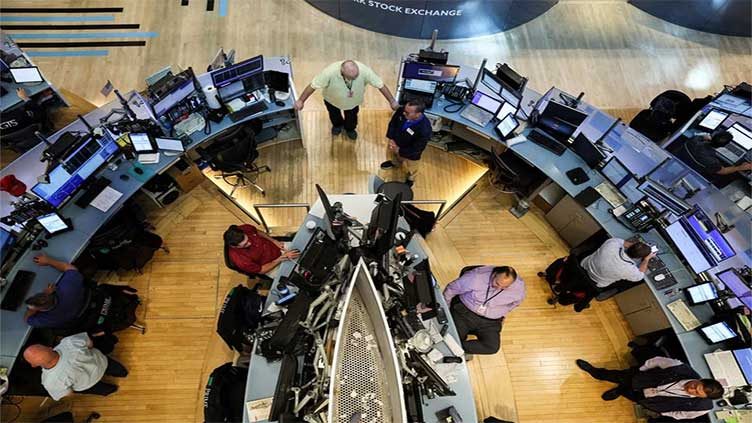Wall Street hangs near its records after wild swings in Asian markets

Business
Wall Street hangs near its records after wild swings in Asian markets
NEW YORK (AP) — U.S. stocks are hanging near their records Monday following a wild start to the week for financial markets in Asia, where Japanese stocks tumbled and Chinese indexes soared.
The S&P 500 was virtually flat in early trading, coming off its sixth winning week in the last seven. The Dow Jones Industrial Average pulled back 155 points, or 0.4%, from its all-time high set on Friday. The Nasdaq composite was 0.2% higher, as of 9:37 a.m. Eastern time.
It’s a pause for Wall Street following its rally to records, catapulted by hopes the slowing U.S. economy can keep growing while the Federal Reserve cuts interest rates to offer it more juice. A big test will arrive Friday, when the U.S. government offers its latest monthly update on the job market.
An overriding worry on Wall Street is whether the economy is already heading for a recession. Even though the Fed cut rates earlier this month and has indicated more are to come, U.S. employers have already begun slowing their hiring. Before this month, the Fed had kept interest rates at a two-decade high in hopes of slowing the economy enough to stamp out high inflation.
“Payrolls remain the biggest catalyst” for the U.S. stock market until the election, strategists and economists at Bank of America wrote in a BofA Global Research report.
At Goldman Sachs, economist David Mericle says he’s expecting Friday’s report to show hiring in September was stronger than the 146,000 growth in payrolls that economists across Wall Street are broadly forecasting.
In the past, a stronger-than-expected number could have hurt the stock market by fanning worries about upward pressure on inflation. Now, though, it would likely be welcomed as a signal that a recession shouldn’t be as big a worry.
Interest rates and the strength of the economy are usually the two main levers that set prices for stocks. In Asia, the levers were pulling in opposite directions.
Japan’s Nikkei 225 slumped 4.8% on that the country’s incoming prime minister will support higher interest rates and other policies that investors see as less market-friendly. Shigeru Ishiba is set to take over on Tuesday.
Ishiba has expressed support for the Bank of Japan’s moves to pull interest rates away from their near-zero level, which would put upward pressure on the value of the Japanese yen. A stronger yen can hurt profits for Japanese exporters, who make sales in other currencies and then convert them back into yen.
Toyota Motor’s stock fell 7.6% in Tokyo, while Honda Motor’s dropped 7% Monday.
Stellantis, the company that owns the Jeep brand and others, tumbled 13.7% in Milan after cutting its forecast for upcoming profit. It cited investments to turn around its U.S. operations and increased Chinese competition.
Stock indexes broadly sank across much of Europe.
In China, meanwhile, indexes soared 8.1% in Shanghai and 2.4% in Hong Kong following the latest announcements of stimulus for the world’s second-largest economy. It was the best day for Shanghai stocks in nearly 16 years.
China’s central bank announced moves on Sunday to ease mortgage rates for existing home loans by Oct. 31. The major southern city of Guangzhou meanwhile lifted all home purchase restrictions over the weekend, while both Shanghai and Shenzhen revealed plans to ease key buying curbs.
The moves followed a flurry of announcements last week from China’s central bank and government intended to prop up the world’s second-largest economy, whose growth has been flagging under the weight of a struggling real-estate sector.
Markets in mainland China will be closed Tuesday through Oct. 7 for a holiday marking 75 years of communist rule in China.
In the bond market, the yield on the U.S. 10-year Treasury ticked up to 3.76% from 3.75% late Friday. The two-year yield, which more closely tracks expectations for what the Fed will do with short-term rates, rose more. It climbed to 3.60% from 3.56%.


